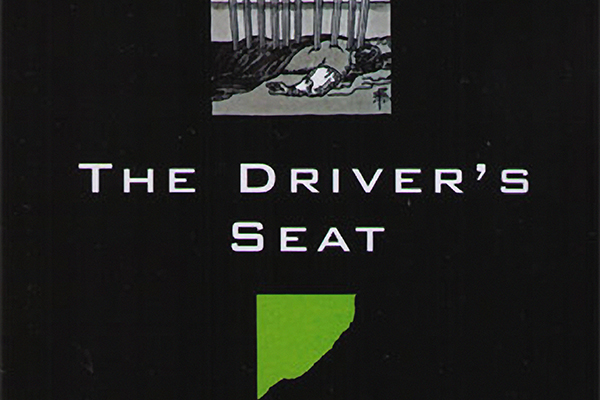The Driver’s Seat
By Muriel Spark
Every character in the book has a different type of unnerving weirdness. A grotesque woman holds her breasts and laughs openly for a long time at Lise’s clothes. A woman buys books in pastel shades to match her spare bedrooms. Lise meets Bill, a greasy sex-crazed entrepreneur with very particular eating habits. He carries around a sack of rice which leaves a dribbling trail wherever he goes. Bill’s world is split into Yin things and Yang things. Coffee and salami are bad Yin. Rice and sex are good Yang. Lise likes coffee and doesn’t like sex. Bill thinks he is Lise’s type. Lise meets Mrs Fiedke, an elderly Jehovah’s Witness who suffers from narcolepsy and confusion. She is worried about the men’s rights movement; that men are demanding to be able to wear jewellery and look after the children. They won’t be content with equal rights only. They’ll want the upper hand next. Mrs Fiedke buys presents for the nephew she is sure is arriving on a flight sometime soon. She stays up late in case he knocks on the door. A nice man in a dark suit changes seats on the plane so he doesn’t have to sit next to Lise and Bill. He doesn’t know why exactly. He tells the police he was scared.
I love this book. The Driver’s Seat is a mind-fuck of a crime story in which the narrator and characters seem to be conspiring against each other for no reason other than paranoia and spite. Neither author nor heroine attempt to explain what is going on. Trying to keep up with details only makes the plot more nonsensical, but it kind of makes sense, provided you accept the book’s absurdity. Everything seems to come back around to the start, but with none of the coherence expected of a crime novel. The Driver’s Seat is a slim book – just over 100 pages – so you pay close attention to long descriptions of uncannily normal details. The crime-reader’s eye picks these up as clues, and they sort of are. The book was written in 1970, when politics surrounding gender, race, oppression, and human rights were very much in the spotlight. Murial Spark turns everything the 70s stood for upside down, blurring the definitions of emancipation, freewill, motive, and especially victim and perpetrator – not to mention everything else in the world. Spark says, “I aim to startle as well as please.” If by “startle” she meant “scare the shit out of and confuse horribly”, then she was successful. You should read this book. Good luck.



